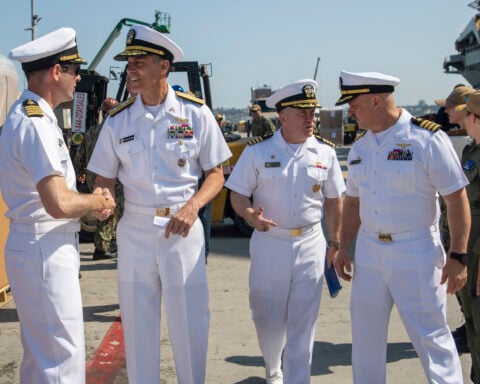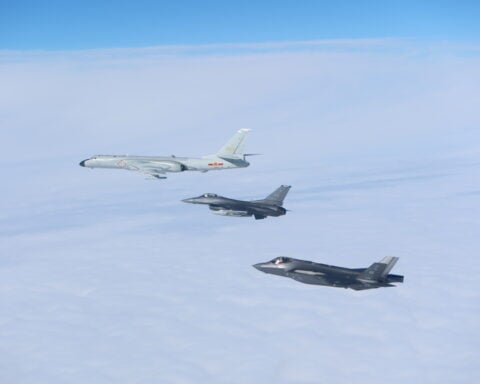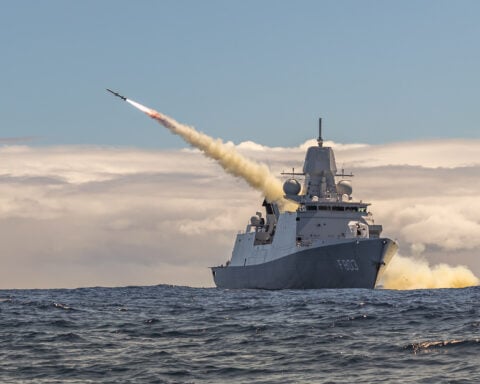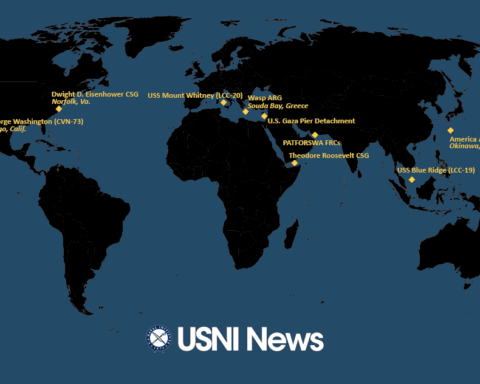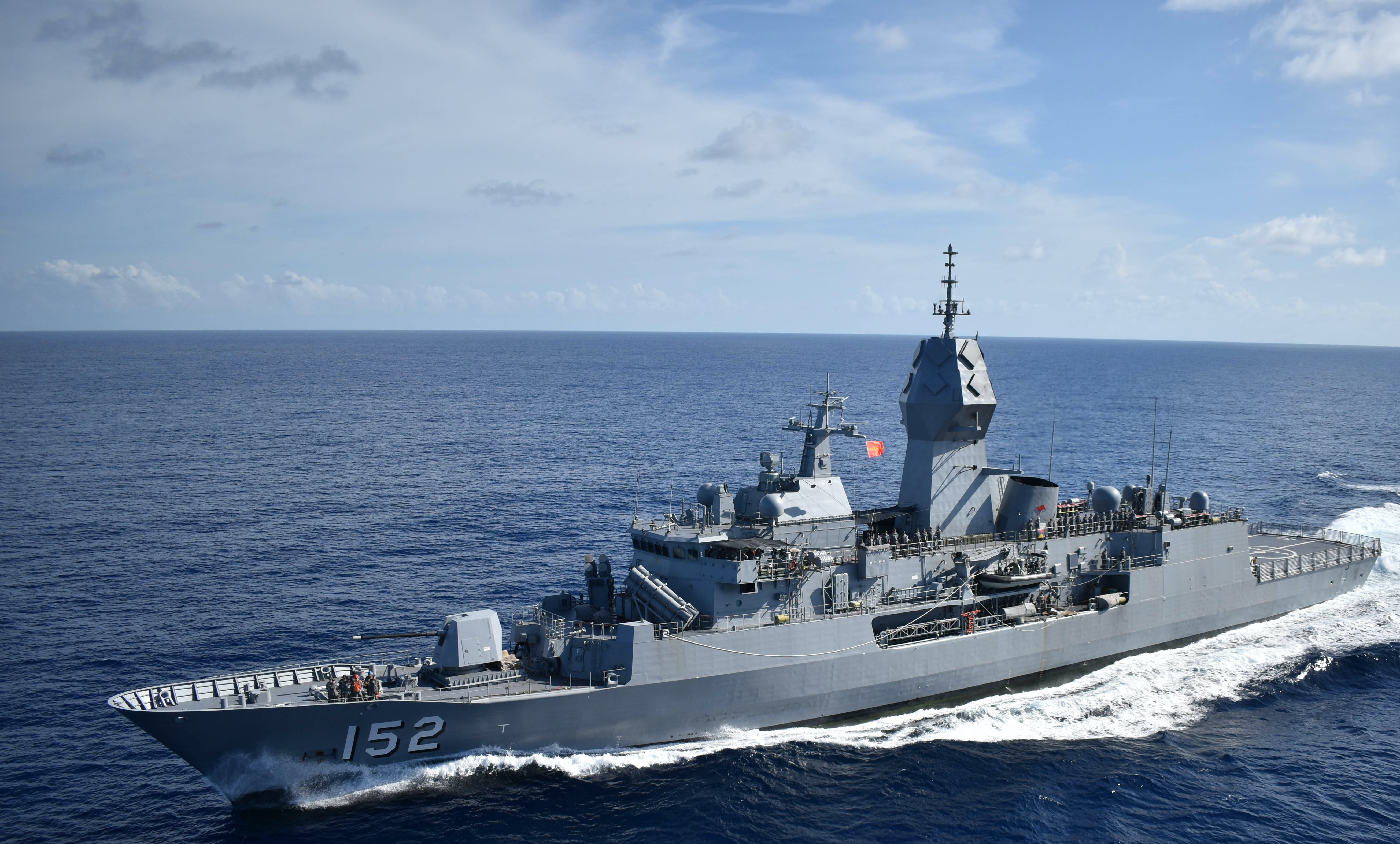
Australia and Canada have wrapped up their Asia Pacific deployments with the return of their ships home, while a U.S Los Angeles-class submarine has arrived at its new homeport in Guam.
Destroyer HMAS Brisbane (DDG41) and frigate HMAS Warramunga (FFH152) returned today to their homeports at Fleet Base East, Sydney and Fleet Base West, Rockingham, respectively, after completing a three-month regional presence deployment in South East and North East Asia. The deployment included both ships’ participation in the Japan Maritime Self-Defense Force’s ANNUALEX 21 exercise, which also included the U.S. Navy, the Royal Canadian Navy and the German Navy.
Warramunga also spent late October and November in the East China Sea conducting Operation Argos, which is Australia’s commitment towards the United Nations Security Council sanctions on North Korea. A multinational force of ships and aircraft have been conducting deployments out of Japan since 2018 to monitor and deter North Korea’s illegal ship-to-ship transfers of sanctioned goods. Brisbane lost its embarked MH-60R Seahawk helicopter in an incident in the Philippine Sea on Oct. 13. The ship successfully rescued the helicopter’s crew. A replacement MH-60R Sea Hawk was transported to Japan via a Royal Australian Air Force C-17 to join the ship in the first week of November.
Prior to arriving home, Warramunga conducted a refueling exercise at sea with USNS Rappahannock (T-AO-204) last week and also drilled with the Carl Vinson Carrier Strike Group in the Savu Sea. The Vinson CSG is currently in the Indian Ocean off Australia conducting exercises with the Royal Australian Navy.
The RAN will decommission replenishment ship HMAS Sirius (O266) on Saturday at HMAS Stirling in eastern Australia. Sirius was built as a double-hulled commercial product tanker, M/V Delos, purchased by the Australian government in June 2004 and commissioned into service in September 2006 after receiving modifications for underway replenishment and a flight deck fitting for helicopter operations.
Sirius completed its final deployment in November, which included participation in the second phase of the Quad — Australia, India, Japan and the U.S. — Exercise Malabar 2021, which was held in the Bay of Bengal in October. The ship also replenished RAN and partner nation ships in Southeast Asia and the Indian Ocean while on its last deployment. The RAN’S replenishment requirements will now be carried out by the two new Supply-class replenishment ships, HMAS Supply (A195), commissioned in April and HMAS Stalwart (A304), commissioned in November.
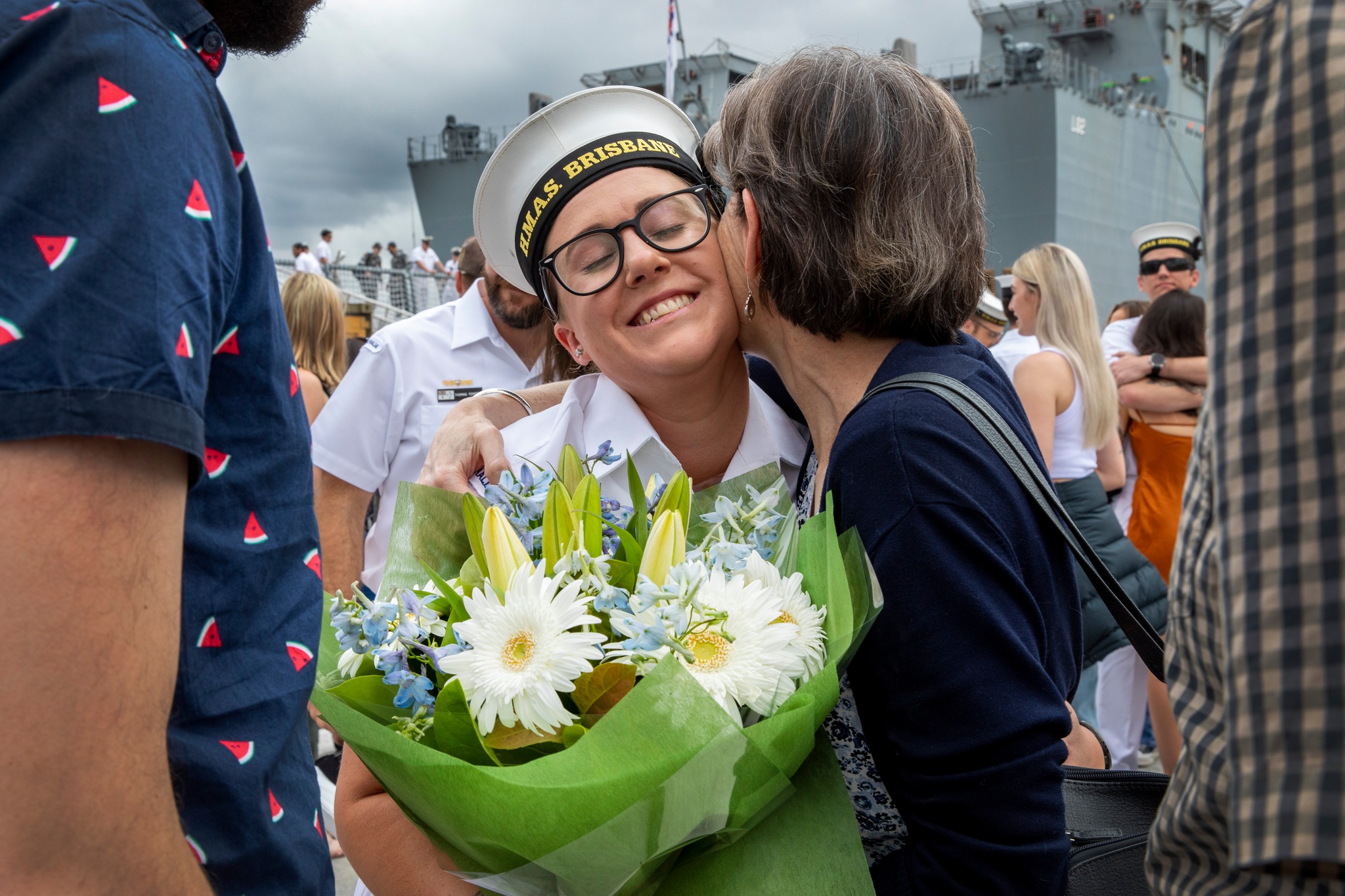
Canadian frigate HMCS Winnipeg (FFH338) arrived home at Canadian Forces Base Esquimalt on Thursday, completing a four-month presence deployment to the Asia Pacific that included approximately a month-and-half dedicated to Operation Neon, Canada’s contribution to the coordinated multinational effort to support the implementation of U.N. Security Council sanctions imposed on North Korea. During Operation Neon, Winnipeg conducted 48 patrol days at sea and collected intelligence on 23 vessels of interest suspected of violating U.N. sanctions against North Korea, according to a Canadian Navy news release.
Winnipeg also participated in ANNUALEX 21, along with conducting exercises with the United Kingdom Royal Navy Carrier Strike Group 21 in the Philippine and South China seas. The drills also involved the Reagan and Carl Vinson Carrier Strike Groups.
The Los Angeles-class fast-attack submarine USS Jefferson City (SSN- 759) arrived on Thursday at Naval Base Guam following a change of homeport from Joint Base Pearl Harbor-Hickham.
“This homeport change continues our focus to bring our most capable submarines to theater with the greatest amount of striking power and operational capability to bear in the timeliest manner,” Capt. Bret Grabbe, the commodore of Submarine Squadron 15, said in in a U.S. Pacific Fleet news release. “Jefferson City served with distinction while homeported in Hawaii since 2014 and now joins Submarine Squadron 15 in order to achieve rapid response times for maritime and joint forces while serving INDOPACOM objectives. We look forward to Jefferson City supporting national and Pacific Fleet objectives as part of the Forward Deployed Naval Forces stationed in Guam.”
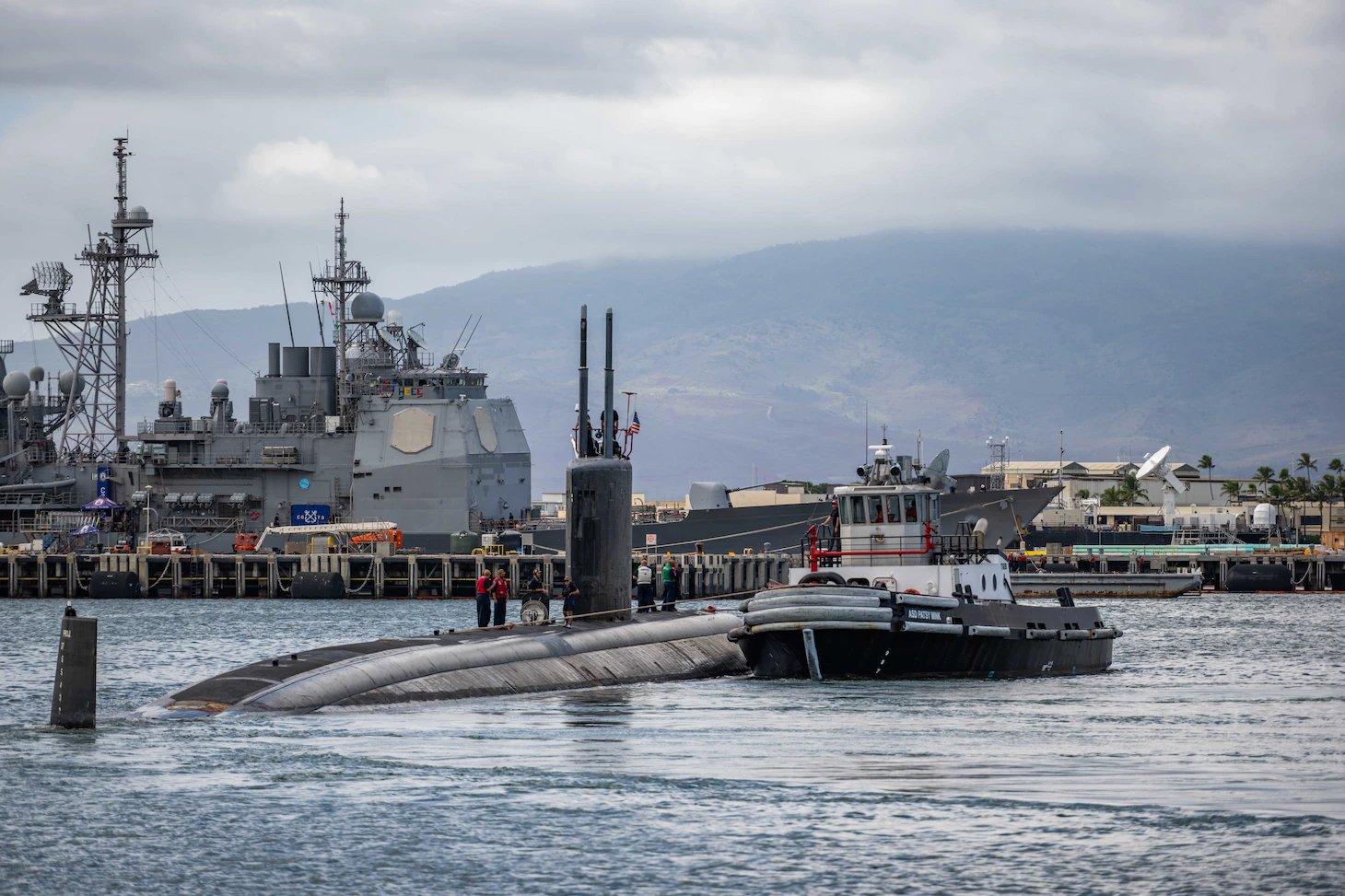
The U.S Navy also concluded the Bangladesh and Timor Leste phase of the annual Cooperation Afloat Readiness and Training (CARAT) series on Dec. 9 and yesterday, respectively. CARAT Bangladesh began on Dec. 1 and included participation from Littoral Combat Ship USS Tulsa (LCS-16) and an embarked MH-60S Sea Knight helicopter. U.S. personnel included staff from Commander Task Force (CTF) 72, CTF 75, CTF 76, Destroyer Squadron (DESRON) 7, U.S. 7th Fleet Fleet Band and U.S. Embassy Dhaka. An at-sea phase took place in the Bay of Bengal, where Tulsa was joined by ships and aircraft from the Bangladesh Navy for partnered training focused on building interoperability and strengthening relationships.
CARAT Timor Leste took place off Port Hera and included Littoral Combat Ship USS Charleston (LCS-18).
“The Timor-Leste Defense Force (F-FDTL) members embarked on Charleston for partnered training focused on building interoperability and strengthening relationships. The exercise featured onboard subject matter expert exchanges on navigation, engineering and damage control, and visit, board, search, and seizure (VBSS),” the Navy said in a statement.


